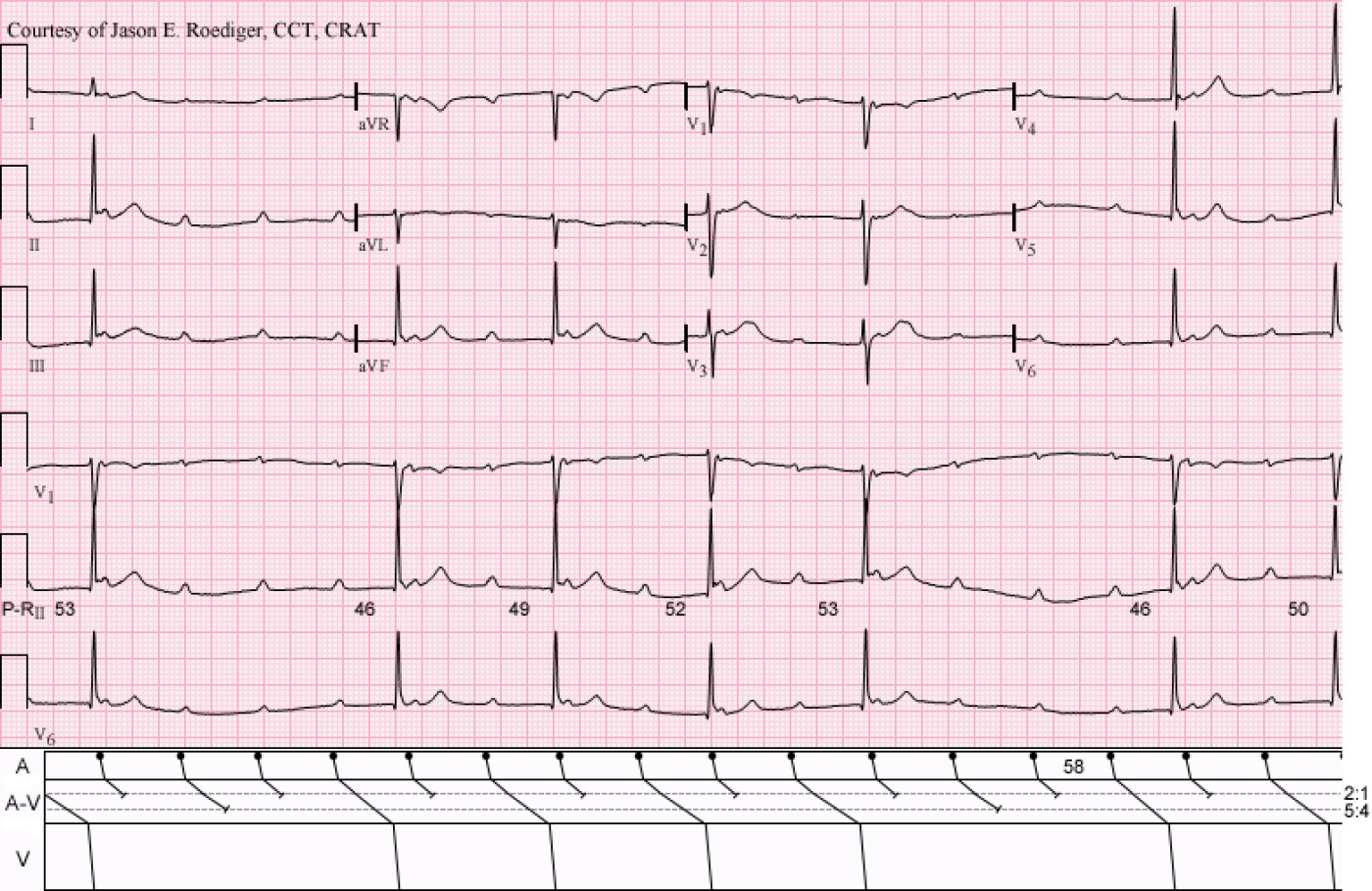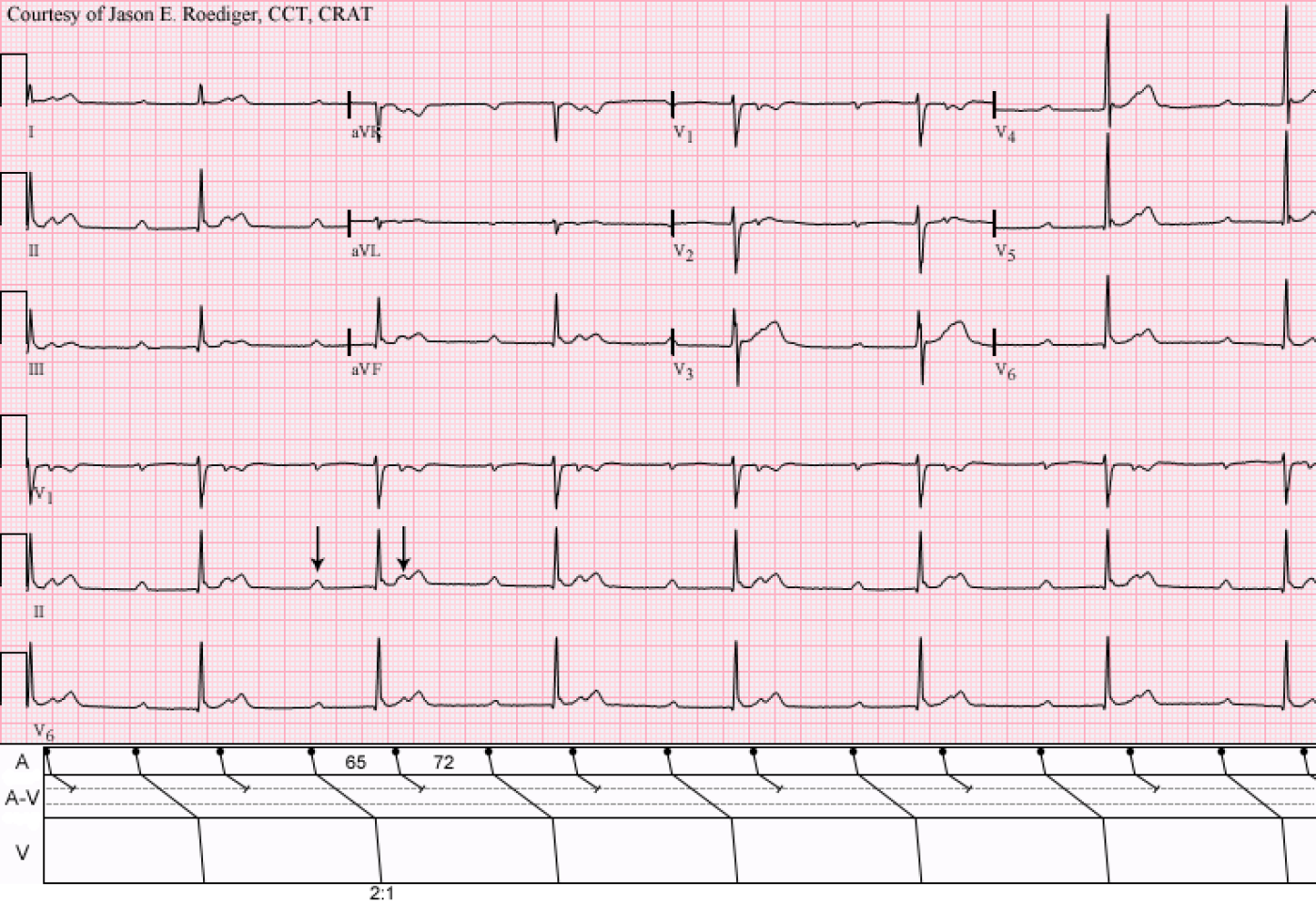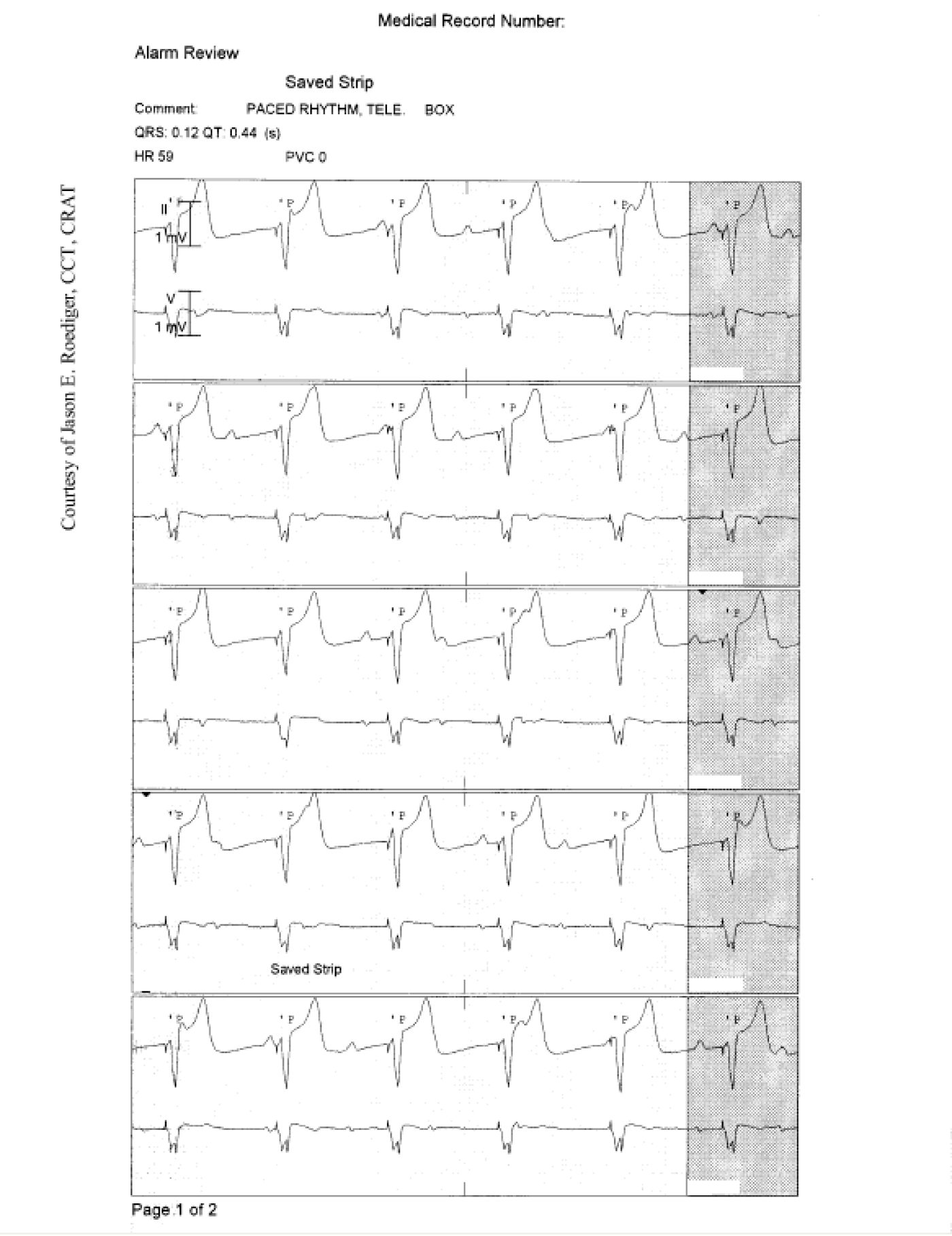We are now in the month of August. Lyme Disease Awareness Month was about 4 months ago in May but that doesn’t mean that the number of cases are in decline. As a result of the mild winter, deer populations are thriving and consequently deer ticks are booming.
Since I’ve already posted my answer to this week’s ECG Challenge, I thought I’d take this opportunity to issue a pertinent and timely public health/practice alert.
This particularly applies to those of you who live in “at risk” states. Virginia itself is not considered a high risk state, but it certainly shares borders with states that are. Transitional zones extend well into the Central Virginia area where I live.
If you’re a healthcare provider who performs ECGs and/or conducts an initial review of them, then you should be on the lookout for the onset of any newly documented A-V blocks in your patient population. On my daily job, I often find myself in the unique position of being the first person to discover changes in rhythm, rate, and/or waveforms. You should be hypersensitive to the symptoms of Lyme disease and keep it on your diagnostic “radar”. Recently, I featured two examples of AV block with one of them being new. In retrospect, I should have suggested Lyme disease to both of the doctors when I returned the ECGs back to them. I, and some of my fellow cardiographic technicians, have noticed an increase of patients coming in with ticks embedded in their skin. One of my coworkers said she discovered two ticks on the same patient during the course of performing their resting ECG. In order to properly perform an ECG, a certain amount of undress, disrobing, and skin exposure is mandatory. Just as hairdressers have been trained to recognize skin cancer on the scalp, I've been putting the word out for others to be on the lookout for ticks and/or suspicious rashes when performing ECGs.
Suspecting Lyme disease is especially true if you discover relatively young and otherwise healthy individuals exhibiting disproportionately high-grade (advanced) AV blocks such as the one I’ve posted above. It's probably safe to say that most medical professionals don't know that Lyme disease can cause atrioventricular (AV) blocks. In talking to my colleagues in cardiology, I've found out that a fair amount of them didn't know this fact. Lyme disease doesn't always lead to A-V block (only about 8% of cases do), but when left untreated, it increases the risk that it might progress to high-grade or even complete AV block which can contribute to death.
Patient’s clinical data: 31-year-old black man who reported recent rash 5-6 weeks prior to hospital visit. Lyme titer came back positive at a level of 5.33. Any level greater than 1.09 is considered to be positive. During his hospitalization, this patient was reported to have a 9-second period of ventricular asystole for which he received a temporary pacemaker.
Personally, I’ve been a long-time resident of the Commonwealth of Virginia for over 31 years, and recently I’ve noticed an increase in stories being run by the local news media on both television and in print.
Sources / References:
(1.) Governor warns of Lyme disease as tick season continues
(2.) Strange Skin Patches with Syncope and Palpitations (sign-in required)
(3.) Lyme disease on rise in Virginia, health officials say
(4.) Ticks are out and Lyme disease is increasing
-

- jer5150's blog
- Log in or register to post comments
All our content is FREE & COPYRIGHT FREE for non-commercial use
Please be courteous and leave any watermark or author attribution on content you reproduce.




